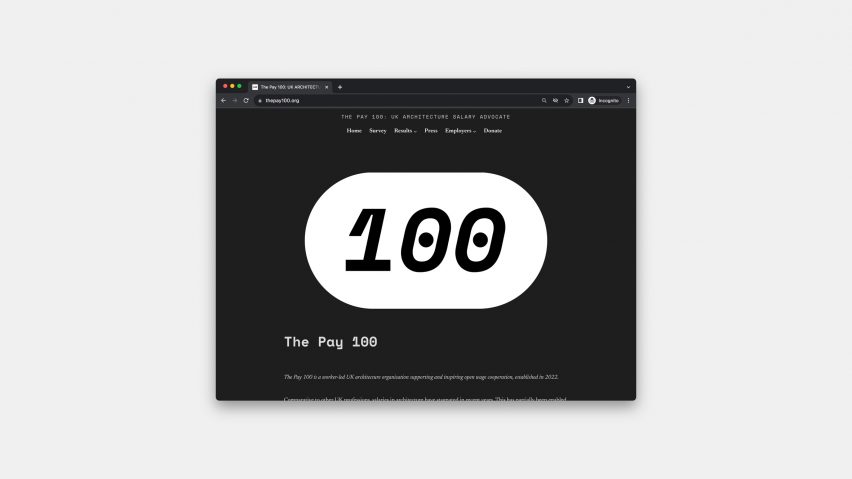
The Pay 100 reveals "clear increase" in architecture salaries along with "systemic unpaid overtime"
The results of The Pay 100's second annual anonymous salary survey suggest an increase in average salaries at the UK's leading studios but significant reported levels of unpaid overtime.
Launched last year, The Pay 100 aims to encourage "full wage transparency" by compiling average salaries for several positions at the UK's leading architecture studios.
"Both positives and negatives"
According to the organisation, this year's results demonstrate positive change, but also highlight the issue of unpaid overtime.
"The results illustrate both positives and negatives," a representative of The Pay 100 told Dezeen.
"There is a clear increase on the numbers reported last year across the board, however there are still young talented individuals struggling to make ends meet, as well as systemic unpaid overtime."
The Pay 100 published a list of average salaries and levels of unpaid overtime based on respondents to its survey. However, it makes clear the results are only an "indicative snapshot" and cannot be fully accurate "until such time as industry-wide data has been collected".
"We should celebrate" improvement
According to the data published, Part 1s are currently earning the most at Foster + Partners with an average salary of £31,000, while Part 2s are earning the most at Adamson Associates with an average salary of £43,000 and qualified architects are earning the most at BSBG with an average salary of £56,000.
The overall salaries for each position showed improvement from last year, which The Pay 100 believes should be celebrated.
"Last year the Part 1s ranged from £15-31,000, now £19-31,000," said a representative of The Pay 100. "Part 2s ranged from £28-36,000, now £28-43,000. Architect/designers ranged from £34-46,000, now £34-56,000."
"This clearly indicates an improvement we should celebrate considering the financial stagnation the profession has endured in recent years," they continued.
The results also showed that people at many studios are still earning below the Living Wage.
"It is absolutely a surprise that so many practices are still offering salaries below the London and UK Living Wage," said a representative of The Pay 100.
"It is important to remember that the Living Wage exists for a reason, first and foremost we need to ensure that architectural employees can afford to survive."
Along with the number of studios paying below the Living Wage, The Pay 100 was also surprise by the amount of unpaid overtime being worked at some studios.
The group added unpaid overtime and additional benefits to its survey this year to create a broader understanding of the benefits of working at different studios.
"There is more than just salary level to consider"
According to the respondents, at some studios, people were working an average of 20 hours unpaid overtime per week.
"The inclusion of unpaid overtime was a surprise," said a representative of The Pay 100.
"It allows for greater transparency and to some degree it shifts the conversation away from a one-dimensional number, with an indication that there is more than just salary level to consider when applying for a new role," they continued.
"The same goes for employee benefits. If practices wish to submit these it will give prospective employees a much better insight into the kind of company they are applying to."
Overall the group hopes that the results will continue to encourage companies to be transparent about the wages they offer.
"Our initial ambitions have not changed, so we still hope that the results we publish will encourage financial growth for the profession as a whole," said a representative of The Pay 100.
"We hope that practices are incentivised to continue to increase salaries and fees alike, so we are no longer in a position where we are trailing behind inflation," they continued.
"We also hope to narrow the gap between financial expectations in and out of London by incentivising all practices regardless of where they are based. Why can't practices aspire to pay their employees the same salaries regardless of location? After all, we are more agile than we have ever been."